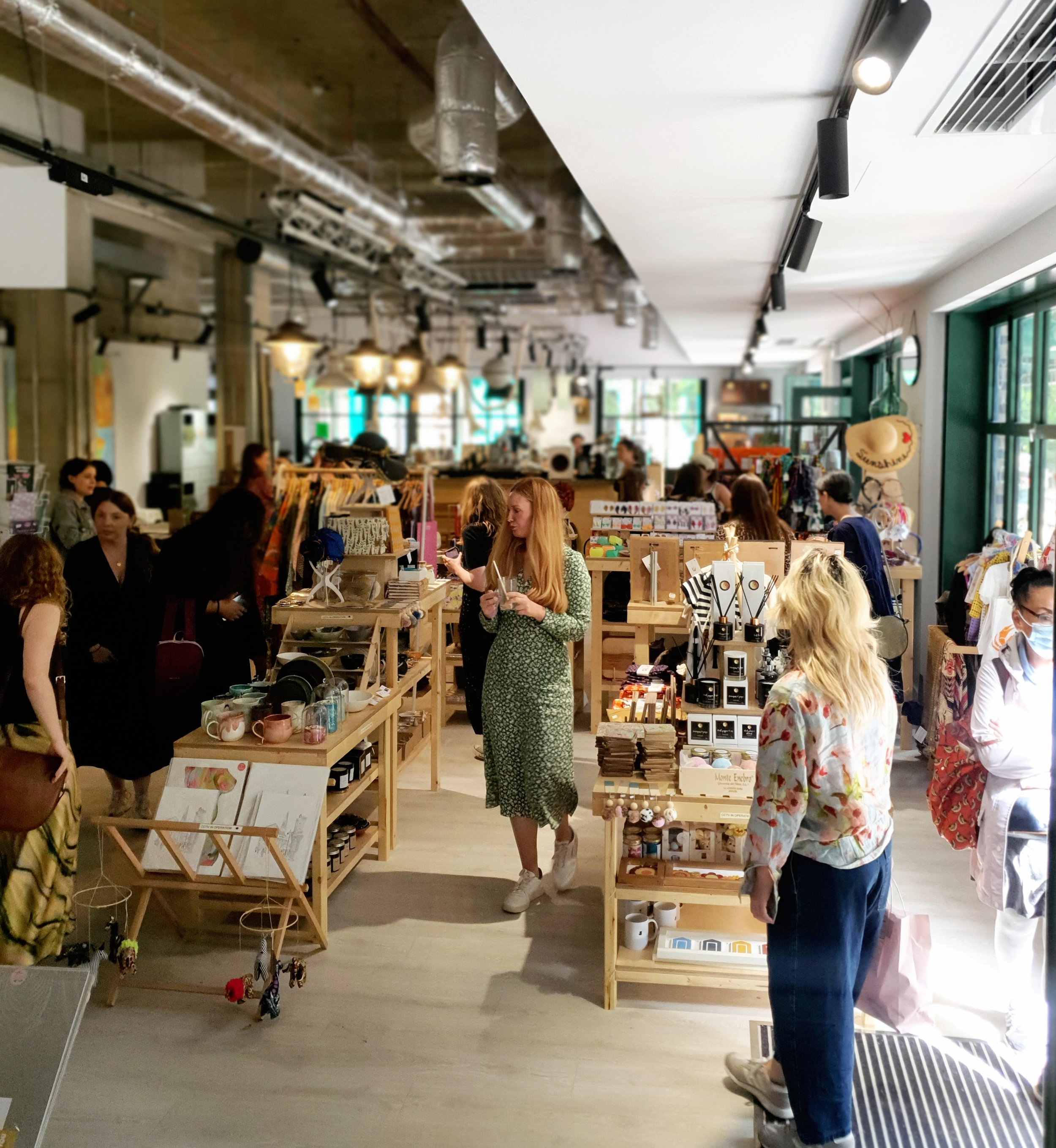We started SoLo Craft Fair back in 2016 running craft markets for makers throughout Southeast London. As makers ourselves we already had experience selling at markets and online, and this experience grew as we started running our own craft fairs. In 2021 we opened our shop in Elephant Park London, and from this we’ve gained a wealth of knowledge about consumer behaviour and habits in a brick and mortar shop.
We’ve put together this post detailing some of the retail tips we’ve learned along the way including what sells best and what can put some customers off!
All shops are different, and have different customer bases with unique spending habits, so these aren’t hard and fast rules for retail, but they are useful if you’re planning on selling your products at our shop.
As a general rule, if you’re not seeing the level of sales you’d hoped for either online/at markets/in a shop, try not to be discouraged! – Keep trying new things, thinking of creative solutions and experimenting until you get it right. We have seen some of our traders turn around their sales from being slow sellers to our highest performing traders, and they’ve done this by constantly evolving their business and trying new things.
1. Use clear, easy to understand labels and packaging
We’ve noticed that lots of shoppers are put off looking at a product if it’s not glaringly obvious what it is at first glance. If you sell a product that needs an explanation (perhaps an embroidery kit that comes packaged in a box for example), make sure that the customer can understand the product easily with clear, concise written information and pictures. If the customer has to pick up the product, take off the lid and search for information to understand what it is and how it works, it’s most likely they won’t hang around to do so!
2. Price everything
A lot of customers will not ask for prices so make sure your price is printed on your product.
3. Always keep your stock topped up
We’ve noticed that sales can drop if traders do not replenish their stock. The more stock you have in the shop, the more there is for customers to see and buy.
4. If something sells, restock with the same product
It’s great trying out new products, but if you’ve hit on a best seller, keep restocking that product.
5. Have multiple product types
Generally speaking, traders with multiple product types tend to sell more. For example, a trader who has 15 unique T shirts in the shop is more likely to have more sales than a trader with 15 of the same T shirt design.
6. Help your customers understand how to use your product
If you sell a dress that can be worn 5 different ways – show the customer the different ways it can be worn as it might not be obvious to them. You could include pictures on your label to make it clear.
7. Don’t use plastic packaging
Our customers are very eco conscious and are put off products wrapped in plastic. If you have to use plastic (for art prints for example) make sure it is biodegradable. This is a trend that is probably going to increase as people become more environmentally aware, so why not start now?
8. Have a varied price range
We find that traders with lots of different items at different prices, tend to make the most sales, as their items appeal to lots of different customers with different budgets.
9. Know your customer
It’s always a good idea to think about the type of people who will be shopping where you sell your items. Our customers are mostly professionals or families with an age range of 25-50 years. Most of our customers are local so products featuring images of the local area are often popular.
10. Sell seasonal products
Selling scarves in the summer or sandals in the winter is not usually a great idea. People shop depending on the season, so make sure you have the right products ready in time for seasonal occasions like Christmas, Valentine’s, Easter etc.
We hope you’ve found these tips helpful! If you’ve not yet applied to trade with us at our Elephant & Castle pop-up shop please apply here – we look forward to hearing from you!


